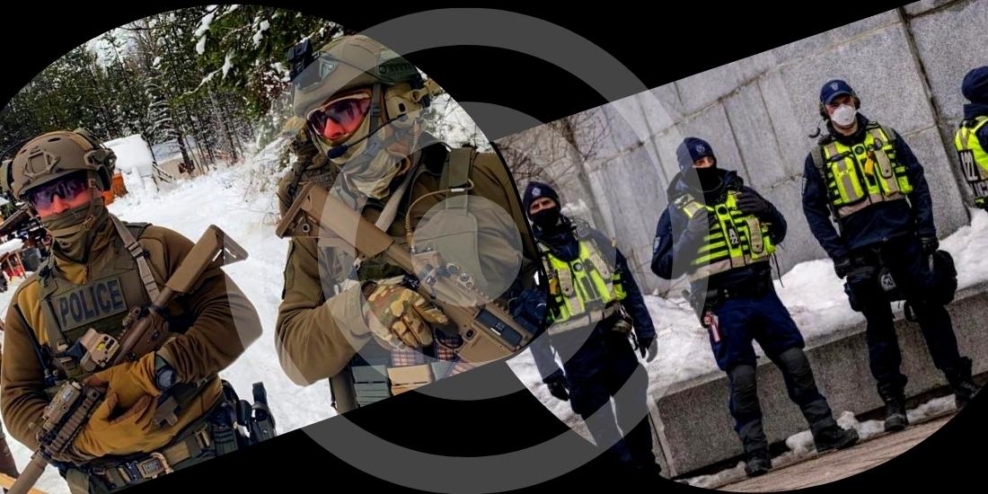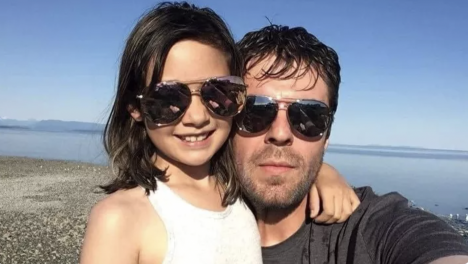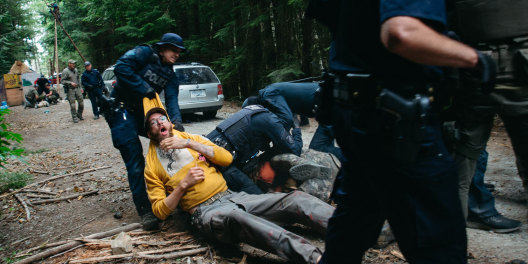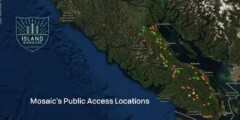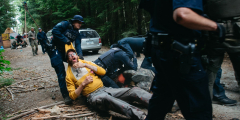Take a look at the two pictures above, then answer these questions.
Guess which photo shows:
- Police at an occupation calling for an overthrow of the government?
- Police confronting people who shut down a city, broke a bunch of laws, and harassed local citizens with weeks of horn honking and verbal abuse?
- Police responding to protesters that assaulted officers with weapons?
That’s right. The police on the right are at the illegal occupation in Ottawa.
Now, what if we told you that the photo on the left shows cops responding to peaceful demonstrators who broke no public laws?
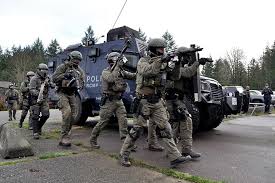
Credit: Gidemt’en | Warrior Publications
Instead, the police on the left are setting up to arrest Wet’suwet’en chiefs. The chiefs and their supporters refused to leave their traditional territory after a private company got an injunction to build a pipeline through it.
The police on the left was a tactical squad. They were geared up for a fight. They had snipers. They had assault rifles, attack dogs, and chainsaws to tear down the cabins of peaceful protesters. It all happened on disputed land. The Supreme Court of Canada has said the protesting chiefs have a strong Aboriginal title claim to the land, but that claim hasn’t made its way through official processes yet.
Now let’s look at Ottawa.
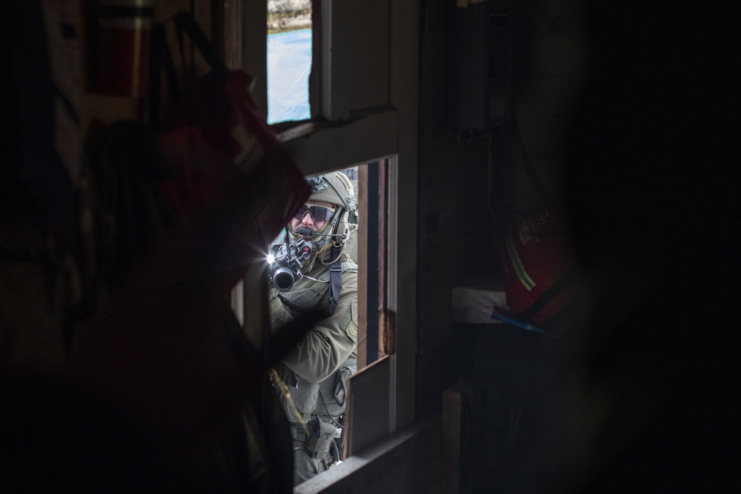
Credit: Gidemt’en Checkpoint | The Narwhal
The police in Ottawa let a mob from out of town park their semi-trucks on streets where driving trucks is illegal. Then they let folks pee on national monuments, intimidate people who lived in the area, and threaten parliament. For weeks, the cops just kind of stood there and watched. Everyone in the city was affected.
When the Ottawa police finally moved in, it wasn’t like a military assault. To be clear, they were very coordinated. But they were being verbally and physically assaulted by the mob at the occupation, and they stayed calm.
When people were finally arrested, they were charged with mischief. Even the ringleaders were only charged with counselling to commit mischief. These are pretty easy charges to fight.
There were no tactical squads with flak jackets and rifles. No attack dogs. No snipers.
And that’s a good thing.
Police should always be like the Ottawa cops when dealing with peaceful protesters. No matter how much they disagree with those protesters. They should also use self-control when dealing with angry protesters like the ones in Ottawa.
Police should only bring in military-like tactical assault squads, attack dogs, or snipers when protesters are armed and carrying out violence.
There are two big differences between the situations in the two photos that should concern Canadians.
The first one is a bit easier to see. For the most part, the armed tactical response is mainly used against Indigenous land defenders and their supporters.
The Wet’suwet’en hereditary leaders have pointed this out. So have the Athabasca Chipewyan First Nation. They’re facing harsh new laws to stop them from protesting new pipelines in their territory. But they watched white folks block trade at the Coutts border with almost no pushback from the cops.
They pointed out the “double-standard” and “blatant disparity” in how indigenous and non-Indigenous protests are dealt with by the government:
In Coutts, we see the inequities of our country when it comes to Indigenous people and the methods used to control our rights to peaceful protest. If the blockade in Coutts consisted of Indigenous people, there would have been arrests and charges laid; instead, the Coutts blockade is being allowed to continue, even though it has at times become violent... “If peaceful protests of critical infrastructure at Coutts is allowed, then we expect the same to be true in the future should Indigenous people engage in similar forms of protest.”
– Statement by Athabasca Chipewyan First Nation
Unfortunately, armed tactical responses to Indigenous demonstrators aren’t new in Canada. Police used these tactics in the Oka Crisis in Quebec, the Ipperwash Crisis in Ontario, Gustafson Lake and the recent Wet’suwet’en and Fairy Creek stand-offs.
The second critical difference is harder to spot. It’s the difference between public criminal law and private civil law.
Most of the standoffs with Indigenous land defenders involve a corporation’s civil injunction. A private company claims rights to a piece of land–usually to extract oil, minerals, or timber or build something–and uses the courts to defend it. It’s private civil law.
So instead of being charged with mischief like people in the Ottawa mob, the Indigenous protesters and their supporters are arrested for “contempt of court.” That’s a civil violation. And also it’s a much harder charge to fight. Even if it’s a dispute over land you have a legitimate claim on.
Private civil law is also less flashy than criminal law. So it means the police can do what they want without much public attention.
One day soon, there will be a public inquiry into the Ottawa police. Hopefully, we’ll find out what the police were thinking when they were handling the illegal occupation.
The inquiry should ask whether the cops went easy because the mob was full of white people.
If the inquiry doesn’t ask that question, the rest of Canada might. Because the difference will be all over the news.
If the federal government keeps trying to push the TransMountain and Coastal Gas Link pipelines, there might be more land defenders out there protesting right here on VanIsle.
If the cops show up looking like the photo on the left, it will be hard not to see how different Indigenous folks get treated.

